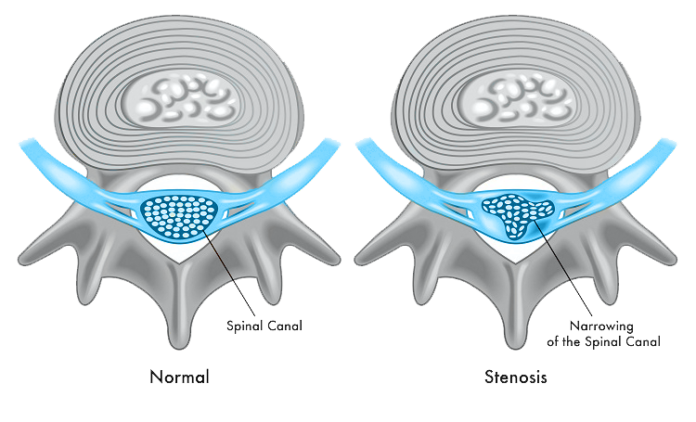Foraminal stenosis occurs when foramina in your spinal vertebrae begin to compress and narrow. The condition causes numbness, weakness, tingling, and pain in your hands or legs. Visiting a reliable pain management clinic can help diagnose and treat your condition, allowing you to return to a more active lifestyle.
Types of Foraminal Stenosis
The type of foraminal stenosis varies depending on which part of your spinal cord is affected. The most common types are cervical, thoracic, and lumbar foraminal stenosis.
Cervical foraminal stenosis occurs in the cervical vertebrae, lumbar stenosis affects the lower back, and thoracic stenosis develops in the upper portion of your back.
Symptoms
Foraminal stenosis symptoms develop gradually and may come and go. The symptoms are different based on the type and severity of your condition.
Cervical
The most common signs of cervical foraminal stenosis are neck pain and balance problems. You may also experience the following:
- Headaches
- Weakness in the hands, arms, and legs
- Stiffness in your neck, shoulders, hands, arms, feet, or legs
Some people may have serious symptoms such as loss of position sense and loss of ability to grasp or pinch.
Thoracic
If you are suffering from thoracic stenosis, you can experience pain in your back that wraps around the ribcage and shoulder area. Other symptoms include:
- Numbness and weakness at or below the abdomen
- Body balance problems
The symptoms can worsen when you bend, cough or sneeze or when you stand for a long time.
Lumbar
One of the symptoms of lumbar foraminal stenosis is sciatica — the pain that develops in your back and extends down the leg and sometimes the foot. Other symptoms include the following:
- Pain that worsens when you walk or stand for a long time
- Progressive weakness in your knees and ankles
- Stiffness, numbness, or cramping in the legs, thighs, or feet
The pain may ease when you lean forward, sit, or lie down.
Causes
The susceptibility to foraminal stenosis increase with age, spinal injuries, and musculoskeletal conditions like arthritis. Other causes might include the following:
- Herniated or bulging discs lead to leakage of fluid pressing on your nerves
- Thickened ligaments around the spine
- Genetic conditions such as dwarfism
- Cysts or tumors
Some positions or actions, like rotating your head, can cause pain by further compressing and inflaming the nerve in the neck. Wear and tear of daily living can also lead to changes in your spinal cord, narrowing the foramen.
Diagnosis
During diagnosis, your doctor can conduct a physical exam to check your muscle strength, movement, reflexes, and pain levels. For a more detailed examination, the physician can recommend imaging tests such as:
- X-rays
- CT scans
- Electromyography
- Bone scans
- MRI scans
Consult a professional doctor for effective diagnosis and treatment if you experience pain, numbness, and tingling in your leg, arm or foot.
Treatment
Several treatments are available based on the severity and cause of your condition. In some cases, especially in the neck, it can get better with no treatment other than modifying your activities, correcting your posture, and stretching. Your doctor may also provide the following treatment options:
Medicines
Doctors can recommend nonsteroidal anti-inflammatory drugs (NSAIDs) and steroids to help relieve or reduce inflammation. Narcotic pain relievers can also be used if you have severe pain that can’t be relieved by other painkillers.
Surgery
Foraminal stenosis surgery may involve cervical foraminotomy, laminotomy, and microdiscectomy.
Cervical foraminotomy helps get rid of a tiny piece of tissue or bone from the cervical vertebrae that causes the compression of nerves. Laminotomy involves the removal of a portion of the lamina to relieve the narrowing of the spinal canal. Microdiscectomy is commonly performed as an outpatient procedure and allows the removal of any matter from the disc that is pressing upon the nerve root or spinal cord.
Choose a Reliable Pain Management ClinicTreating foraminal stenosis can help relieve severe pains and improve the quality of life. Visit a pain management clinic to get an effective treatment that can reduce or eliminate your condition’s symptoms. Your doctor may recommend pain relievers, physical therapy, exercises, or surgery depending on your condition’s severity.











